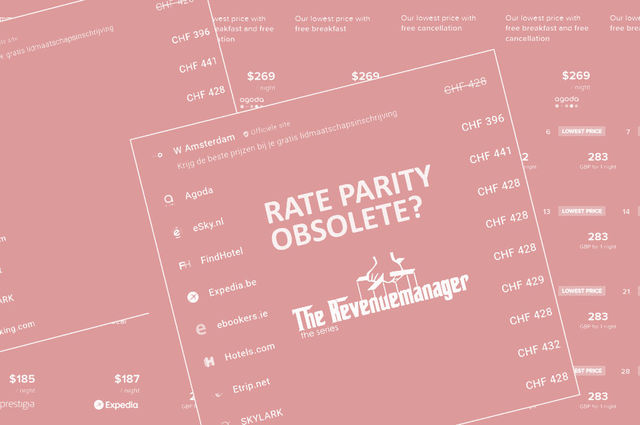Is Rate Parity Obsolete?
16 experts shared their view
The discussion around the pros and cons of rate parity has been around for almost a decade now. Regulations on the issue are, at best, patchy, with some countries where RP clauses are strictly prohibited (such as France, Austria, Italy, and Belgium), partially prohibited (Germany and Sweden), announced (Switzerland), or still unregulated (US and Latin America). With lower volumes of booking coming from OTAs during the pandemic, moreover, the debate about rate parity became even more heated: some properties decided to work in wide rate parity to avoid OTAs' dimming and improve their online visibility at the expenses of direct revenue, while other ones preferred to openly break rate parity on their top-performing channels. Both the OTAs and major hotel brands complicated the issue even further when they began offering out of parity “member only” rates, hidden behind an easily obtained loyalty program password. With so many different approaches and fragmented regulations, how should hotels deal with rate parity, especially after the whole industry has been severely hit by COVID-19?
Rate parity is not obsolete – it's still a major concern for hoteliers since many travelers still consider price as a main factor in their booking decisions. The third parties continue to dip into their margins to entice travelers with slightly lower rates, and the increasing prevalence of metasearch sites, particularly Google, highlight these slightly discounted rates now more so than ever. While major brands or chains may have the leverage and alternate sources of business to attack this head on by shutting down entire channels, most smaller and independent hotels should keep the 80/20 principle in mind when it comes to how they address this question.
Hoteliers must do two things:
First, focus on your own marketing efforts and put together the best offers for their various segments of travelers. Use data, segmentation and personalization to get to know your guests better and put the right offers in front of them. Fenced-rate strategies are successful, so rely on your membership programs to tailor packages to known guests and encourage direct bookings. Offer more flexible cancellation and refundable policies for customers who book direct. Communicate your COVID protocols front and center on your website so consumers feel more comfortable when they visit your website.
Second, consider the resources needed to fight OTAs on their out-of-parity rates and whether your time and money is better spent on refining your own marketing and pricing strategies to convert more direct business. For flagrant issues, yes, you should flag them, research them and follow up with your market manager. There are several technology providers that you can partner with to monitor your publicly available rates and assist in automating your management of parity issues, so that you find them before your potential guest does.



